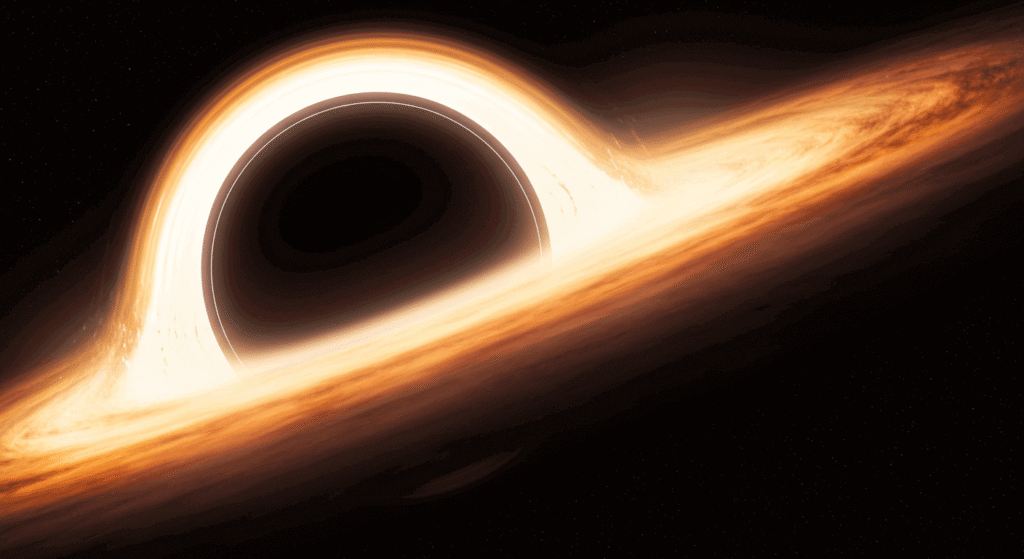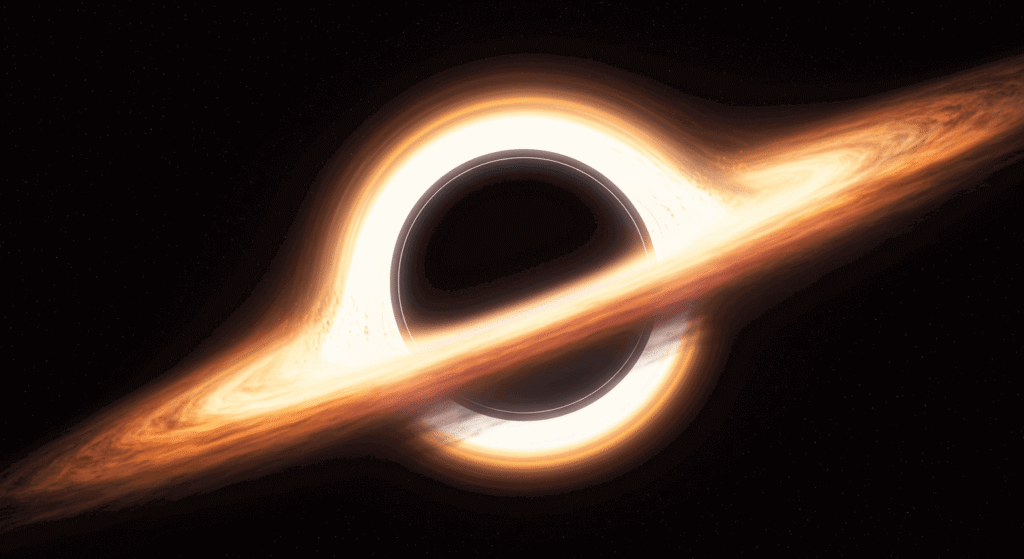Have you ever wondered what the largest thing in the universe is? We’re diving deep into cosmic behemoths, uncovering the secrets of TON 618—a black hole so large it defies imagination.
Staring up at the night sky, it’s easy to feel small. I’ve spent countless nights doing just that, completely mesmerized by the sheer scale of it all. As someone deeply passionate about our universe, I’m constantly searching for the extremes—the biggest, the brightest, the most mysterious objects out there. And that’s what brings us to today’s topic: a cosmic monster that redefines the word ‘massive’. We’re going on a journey to meet the undisputed king of black holes: TON 618. Get ready, because this is going to stretch your imagination to its limits. 😊
Table of Contents
- A Universe of Giants: Setting the Scale
- Meet TON 618: The Ultimate Cosmic Predator
- The Brightest Darkness: TON 618 as a Quasar
- Conclusion: We Are Still Explorers
- Frequently Asked Questions
A Universe of Giants: Setting the Scale 🤔
Before we meet our main attraction, let’s get a feel for cosmic proportions. We often think of our Sun as huge, but in the grand scheme of things, it’s quite average. To truly appreciate the size of TON 618, we need to understand what else is out there.
📝 Cosmic Heavyweights at a Glance
Here’s a quick comparison to put things in perspective:
| Object Type | Name | Size Comparison |
|---|---|---|
| Largest Star | Stephenson 2-18 | ~2,150 times the Sun’s radius. Would reach Saturn’s orbit. |
| Largest Galaxy | IC 1101 | Contains ~100 trillion stars. About 60x larger than the Milky Way. |
| Largest Black Hole | TON 618 | 66 billion times the Sun’s mass. |
As you can see, the universe is filled with incredible titans. But even among these giants, TON 618 is in a league of its own. It’s not just big; it’s what we call an “ultramassive” black hole.

Meet TON 618: The Ultimate Cosmic Predator 🌌
So, let’s talk numbers, because TON 618’s stats are genuinely mind-bending. Its mass is estimated to be 66 billion times that of our Sun. This isn’t a typo. It’s a number so large our brains can barely process it.
To make it a bit easier, think about its event horizon—the “point of no return” for a black hole. The diameter of TON 618’s event horizon is so vast that it could accommodate 11 of our solar systems laid side-by-side. Everything we know—the Sun, Earth, Jupiter, all the way out to the Kuiper Belt—could fit inside this single entity, 11 times over. It’s a staggering thought.
💡 Just How Big Is That?
If our Sun were a single grain of sand, TON 618 would be a sphere of sand weighing more than 3,600 Eiffel Towers. Its gravitational pull is so immense that it completely dominates its host galaxy.
The Brightest Darkness: TON 618 as a Quasar ✨
Here’s a fascinating paradox for you. Black holes are, by definition, the darkest things imaginable. Yet, TON 618 is the engine behind one of the brightest objects in the entire universe. How is that possible? The answer is a Quasar.
A quasar (short for “quasi-stellar radio source”) is an incredibly luminous galactic core. This happens when a supermassive black hole, like TON 618, is in a feeding frenzy. Its immense gravity pulls in surrounding gas, dust, and stars, which form a swirling disk around it called an accretion disk.
How a Quasar Shines 📝
- Gravitational Funnel: Matter is pulled towards the black hole at incredible speeds.
- Cosmic Friction: As the matter swirls in the accretion disk, intense friction and pressure heat it to millions of degrees.
- Luminous Explosion: This superheated matter releases an unbelievable amount of energy as light, making the quasar shine.
The light from TON 618’s quasar is about 140 trillion times brighter than our Sun. It’s so dazzlingly bright that it completely outshines the light from its entire host galaxy, making the galaxy itself almost impossible to see. We aren’t seeing the black hole; we’re seeing the brilliant death scream of the matter it consumes.
Conclusion: We Are Still Explorers 🚀
Discoveries like TON 618 are a profound reminder of how much we still have to learn. They challenge our models of galaxy formation and push the boundaries of physics. From my perspective as a lifelong sky-watcher, it’s thrilling. It tells us that there are still titans lurking in the cosmic dark, waiting to be discovered.
Scientists believe there could be even larger black holes out there, perhaps from the very dawn of the universe. What do you think? Could we find a black hole with a mass of 100 billion Suns, or even more? Let me know your thoughts in the comments below! The cosmic hunt is far from over. 😊
💡
TON 618: Key Facts
✨ Unmatched Mass: Weighs in at 66 billion solar masses, making it the most massive black hole ever observed.
📏 Immense Size: Its event horizon could fit 11 solar systems inside.
💥 Quasar Power: It powers a quasar that shines with the light of 140 trillion Suns.
🌌 Cosmic Significance: Challenges our understanding of how galaxies and black holes grow to such extreme sizes in the early universe.
TON 618 is a true monster of the deep, located about 10.4 billion light-years away.
Frequently Asked Questions ❓
Q: Can we see TON 618 with a telescope?
A: Not directly. The black hole itself is invisible. What powerful telescopes see is the brilliant light from its quasar—the superheated disk of matter swirling around it before being consumed.
Q: Is TON 618 a threat to Earth?
A: Absolutely not! TON 618 is located approximately 10.4 billion light-years away from us. The light we see from it today is from a time when the universe was very young. It’s safely in the distant past.
Q: Why is it named TON 618?
A: The name comes from the Tonantzintla Observatory catalog, where it was first noted as entry number 618 in a survey of blue-tinted stars. It was initially mistaken for a star before its true, far more extreme nature was understood.
Q: How do scientists measure the mass of a black hole so far away?
A: They analyze the light from the accretion disk. By measuring the speed of the gas orbiting the black hole (using Doppler shift), they can calculate the immense gravitational force required to keep it in orbit, and thus determine the black hole’s mass.

핑백: Gravastars Explained: Could These Objects Replace Black Holes?
핑백: What Are Quasars? A Guide to the Black Hole Engines That Shape Galaxies